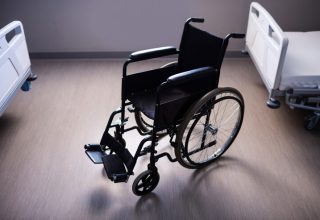Pain Management After An Accident: What You Need To Know
Accidents can happen anytime and anywhere. Whether it’s a minor mishap at home or a major car crash, the aftermath can be physically and emotionally draining.
One of the significant challenges people face post-accident is managing pain. Don’t worry, we’re here to guide you through understanding the types of pain you might experience and the multiple pain relief options available.
Let’s dive right in and ensure your recovery journey is as comfortable as possible.
Contents
Understanding The Types Of Pain

Every pain signals an issue, but deciphering the message post-accident can be tricky due to varied pain types and intensities.
1. Acute Pain
Immediately following an accident, you might experience acute pain—a sharp and sudden reaction to trauma. This could manifest as throbbing from cuts, burns, or intense pain from fractures and sprains.
It’s important to understand that the intensity and nature of acute pain can vary based on the severity of the injury and your pain thresholds. Regardless, seeking immediate medical attention is crucial, as some injuries can lead to complications if left untreated. Facilities like Dominguez Injury Centers or urgent care clinics can address these pains, ensuring patients receive optimal care immediately.
2. Delayed Pain
Not all pain announces its presence instantly. Sometimes, the initial shock and adrenaline rush mask it, making individuals believe they’re unscathed. But delayed pain can emerge hours, days, or even weeks later. Whether it’s due to unnoticed internal injuries or muscle tension leading to stiffness, it’s crucial to stay vigilant and seek medical attention if new symptoms arise.
Delayed pain can also be a symptom of mental and emotional stress. After the incident, they can manifest as headaches, body aches, and other discomforts. And given its sneaky nature, it’s essential to take note of any symptoms or pains that arise. By seeking medical attention, you can ensure timely diagnosis and prevent serious complications.
3. Chronic Pain
Pain from accident injuries typically goes away after several days or weeks. Suppose pain doesn’t go away after the expected healing time for a particular injury or illness. In that case, you might be experiencing chronic pain.
Chronic pain isn’t just an extended version of acute pain. It’s a complex condition that often demands a well-rounded approach so you can cope with the challenges of accident recovery and daily life.
Managing Pain: A Holistic Approach

Pain is multifaceted—it doesn’t just stem from physical trauma as it can intertwine with mental and emotional states. Hence, a holistic approach to managing pain post-accident is beneficial and often necessary. By addressing pain from multiple angles—medical, physical, emotional, and even spiritual—we can forge a path to genuine healing and improved well-being.
Let’s explore the myriad techniques and therapies for a well-rounded recovery plan.
A. Medication
Medication often serves as the first defense against acute or chronic pain. Over-the-counter pain relievers, such as acetaminophen or ibuprofen, can tackle mild to moderate pain. For more severe pain, doctors might prescribe more potent painkillers or anti-inflammatory drugs.
Remember to follow your doctor’s advice regarding proper dosage and duration, as misuse can lead to dependence or substance abuse. Moreover, while pain reliever medicines offer symptomatic relief at best, it’s recommended to complement them with other therapies to treat the underlying cause and promote holistic healing.
B. Hot/Cold Therapy
Hot and cold therapies are proven to alleviate pain and speed up healing. Cold packs applied after the accident can provide immediate relief by reducing swelling and numbing the affected area. Switching to warm compresses or heating pads a few days after can relax and soothe muscles, easing pain from stiffness or spasms.
While both methods are beneficial, it’s essential to use them appropriately. For instance, applying heat to a fresh injury can exacerbate swelling. That said, always consult a healthcare professional for guidance on when to use hot/cold treatments most effectively.
C. Massage
Massage therapy has proven therapeutic benefits for pain relief. After an accident, muscles can tense up or spasm, leading to discomfort and limited mobility. A skilled massage therapist can target these areas, promoting relaxation, improving circulation, and facilitating faster healing. Deep tissue massages can also reach deeper layers of muscles to address chronic pain or injuries.
However, waiting for acute injuries to stabilize before getting a massage is essential. You should also consult a doctor to learn what type of massage suits your injury and recovery stage.
D. Physical Therapy
Prolonged inactivity after an accident can lead to muscle atrophy and weakness. Physical therapy stands as an essential countermeasure. Therapists restore mobility and actively prevent muscle deterioration by engaging patients in tailored exercises and guided movements. This structured approach ensures a return to daily activities with strength and confidence, reducing the risk of long-term physical complications.
Alternative Pain Management Treatments

The world of alternative therapies offers many options that cater to both body and mind. These age-old traditions can complement conventional treatments to provide a comprehensive healing approach. They prioritize the individual’s overall well-being, focusing on physical ailments and emotional and psychological balance.
Let’s explore some of these alternative paths.
1. Chiropractic Care
Misalignments in the spine can lead to persistent pain and mobility issues. Chiropractic care addresses these problems using specialized hands-on adjustment to realign the musculoskeletal system, restore natural balance, and promote self-healing. These adjustments can alleviate pain, improve joint mobility, and enhance overall body function.
Chiropractic care can offer a non-invasive and effective solution for those experiencing back, neck, or joint discomfort after an accident, paving the way for a smoother recovery journey.
2. Acupuncture
Acupuncture involves inserting fine needles into specific points on the body to stimulate natural healing processes. This technique can effectively manage pain by releasing endorphins, the body’s natural painkillers, and improving blood flow.
Acupuncture offers an alternative route to relief for those grappling with chronic pain post-accident. Beyond this, acupuncture may also enhance well-being and reduce stress, making it a holistic treatment worth exploring.
3. Yoga
Yoga is a practice that harmonizes body, mind, and spirit. Post-accident, yoga can play a transformative role. Gentle stretching helps enhance flexibility, strengthen muscles, and improve posture, all of which can counteract the effects of injuries and immobility. Moreover, yoga emphasizes mindful breathing, which can significantly alleviate pain and tension.
While the physical benefits of yoga are undeniable, its mental and emotional advantages are equally profound. Practicing yoga fosters a sense of inner calm, resilience, and acceptance, invaluable qualities during the recovery phase.
For those new to yoga, starting with a trained instructor who can adapt postures to individual needs is essential, ensuring safe and effective practice.
4. Meditation
Post-accident, the trauma can be as much emotional as it is physical. This is where meditation comes in, helping manage this trauma by grounding individuals in the present moment, reducing anxiety, and promoting emotional balance.
Guided meditation sessions focused on pain relief can be particularly beneficial. By directing the mind’s attention away from pain or teaching the practitioner to view pain from a different perspective, meditation can help reduce the perceived intensity of pain.
Regular meditation not only aids in managing pain but also improves sleep quality, reduces stress levels, and enhances overall well-being. As with yoga, starting with guided sessions is beneficial, especially for beginners.
Final Words
Pain management after an accident is a multifaceted challenge. Whether you’re leaning on modern medicine, alternative therapies, or the power of your mind, always consult professionals and prioritize your well-being. A pain-free life is possible after an accident. Stay informed, stay strong, and seek the best path to recovery.
Read Also:
- 3 Top Recommendations for Pain Management
- What Are 3 Different Types Of Pain Management?
- 5 Benefits of Physical Pain Management in Atlanta



